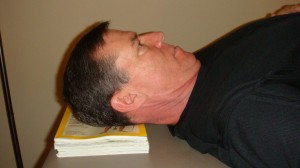“The experience you want is in the process of getting it. If you have something, give it up. Getting it, not having it, is what you want.”
-F.M. Alexander
On of the great temptations when I practice my saxophone is to try to “memorize” how it feels in my body when I’m playing well. Fortunately for me, I rarely ever yield to this temptation (anymore). If I did, I might find myself losing touch with the most important element of my progress: the thinking process I use when I play my best.
It’s easy to disconnect our consciousness from our activities by aiming directly for a feeling of the result we’re after. In the language of the Alexander Technique, this is working along the lines of the “end-gaining” principle. When we end-gain, we bring all our attention and effort directly to achieving a desired result, without sufficient consideration to the process of how we can best achieve that result.
When I do this practicing the saxophone (or engaging in just about any activity) the results are usually less than optimal. This is because I’m being guided by an unreliable source: my habit.
For better or for worse, we are typically guided by habit, and our habits have a certain feeling of “rightness” to us even if they aren’t helping us. (F.M. Alexander described this as an unreliable sensory awareness.) Much of my progress in playing the saxophone since I started applying the Alexander principles has involved learning to not be guided by the feeling of my habits to achieve the results I’m after. Instead, I aspire to be guided by my reasoning, by what I can honestly discern.
Alexander said that rather than going after our desired results directly (guided by the less than reliable sensations of our habits) we would be better served by paying attention to the quality of the process we use to achieve those results. He described this as paying attention to the “means-whereby”. In essence, it is a matter of being more “process oriented” than “results oriented”.
And so I’ve found over and over, both as teacher and as performer, that giving the quality of process top priority is the best way to insure desired results. Consistently.
This is not a new idea. If you’ve ever read the Tao Te Ching, studied Zen, or experienced many of the other forms of eastern mindfulness disciplines, you’ll regularly encounter this idea. It seems to be universally true.
Before I discovered this principle, I practiced in quite a different manner than I do nowadays. I really got no sense of satisfaction from my practice session unless I felt certain certain things as I practiced. “Does it feel right?” was becoming more and more of an indicator of success or failure in my practice attempts.
As a result, not only was I not allowing myself to change and grow as much as I could, but also, I was feeling frustrated by the inconsistencies of my efforts. Not to mention that a lot of what I was hoping to feel was actually nothing more than unnecessary, habitual muscular tension. It wasn’t helping me at all!
These day when I practice, I’m giving my thinking process top priority. This often manifests itself into deeply mindful work, as I pay attention to the quality of how I’m using myself as I practice.
This primarily involves two things that were missing from my pre-Alexander practice sessions:
- Letting myself stop frequently to prevent habitual tension patterns, and to understand specifically what went wrong (what I’d like to prevent).
- Allowing myself to slow things way down to connect my thinking to the activity (particularly when working on technically challenging material).
As I do this, I’m always coming back to discerning the quality of my own use as I play saxophone. Where am I stiffening unnecessarily? How is my balance? Am I mostly contracting or expanding, tightening or releasing? How is my breathing? Am I rushing ahead in my thinking, or staying with myself (and the music!) in the present moment? Am I tense and anticipatory, or am I flexible and yielding?
I’m not using these thoughts to distract me in my practicing process. I’m simply using them as the criteria for discerning if what I’m doing is really what I want to be doing.
When I approach my practice in this manner, I’m staying with (quoting Alexander, above) the “getting it” rather than the “having it”.
You may have heard the saying, “To play faster, you have to practice slower.” Part of the reason this works for so many technically brilliant performers (I’m thinking here of the great clarinetist, Eddie Daniels, as he describes his approach to gaining technical fluency and velocity), is that it gives them a chance to really process what they’re doing.
Add to this paying attention to the quality of how you are using yourself, and you have a surefire recipe for continued, consistent progress.
So next time you’re having a really good day practicing, when everything seems to be going well, take time to notice some things. Notice the quality of muscular tension in your body, specifically through your head, neck, shoulders and back. See if you can understand what your not doing that you normally would do (where are you not working so hard, not tensing so much). Then observe your own thinking process. See if you can connect this kind of thinking to the ease that you have in your body as you play your instrument.
Remember, it’s your thinking process that determines the quality of your playing more than anything else. By shifting your attention from what you are doing, to how you are doing it, is a big step in the right direction to cultivate the kind of thinking that helps you the most.





